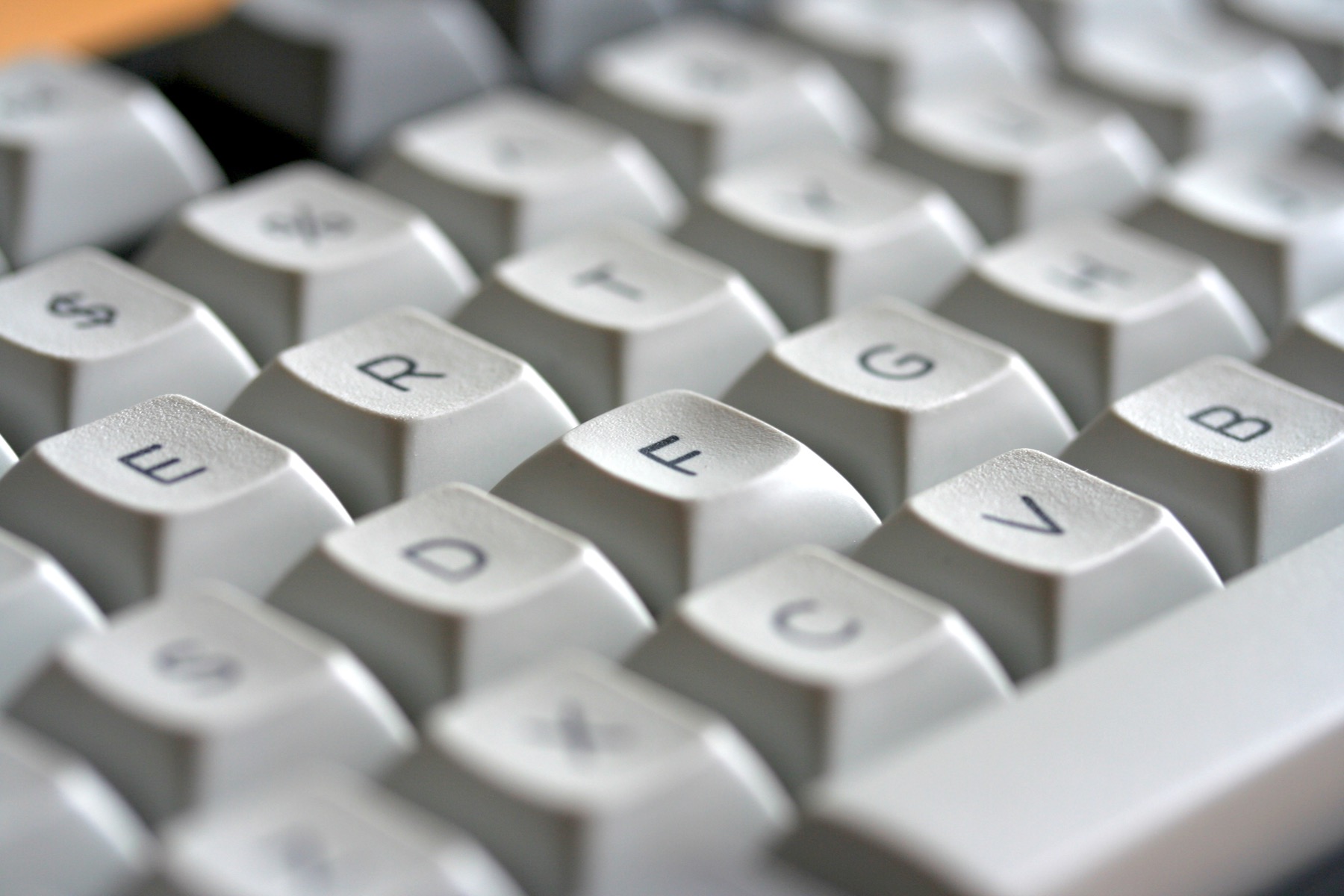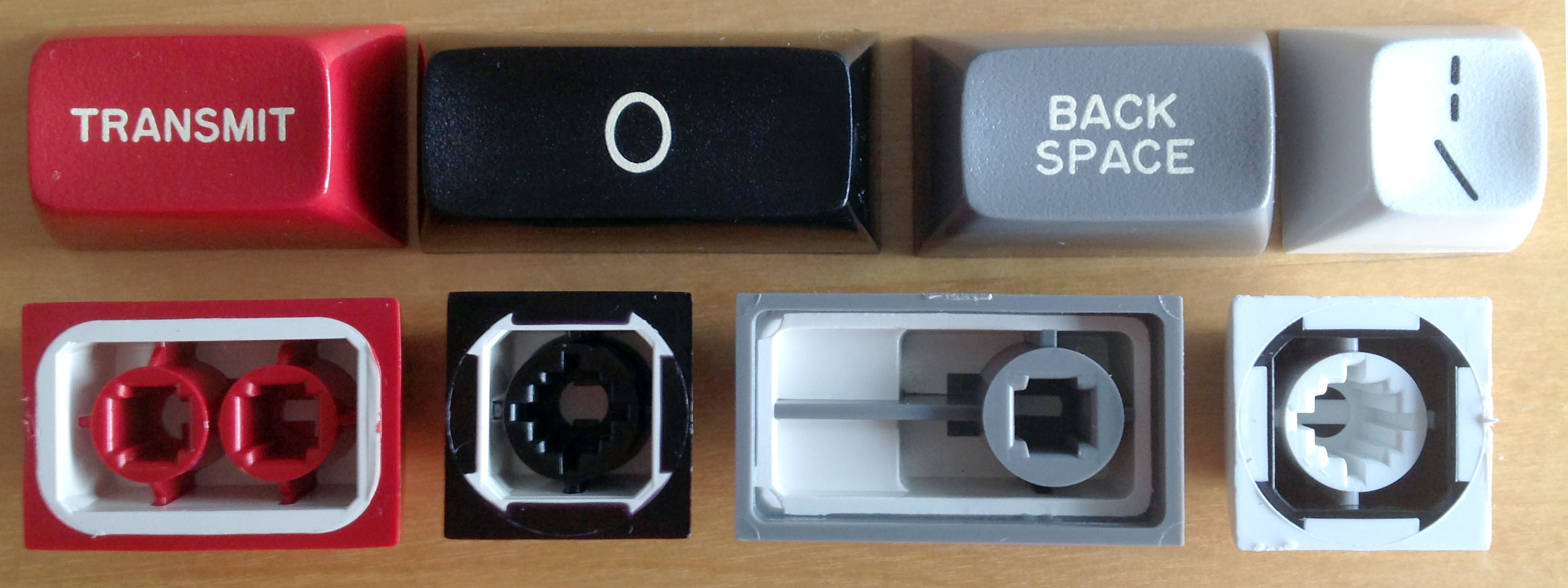HP 264X keyboard review
- Chyros
- Location: The Netherlands
- Main keyboard: whatever I'm reviewing next :p
- Main mouse: a cheap Logitech
- Favorite switch: Alps SKCM Blue
- DT Pro Member: -
Today we look at a really old keyboard from HP with extremely complicated switches; ITW magnetic valve! These are really cool, I hope you enjoy the video! 
- Muirium
- µ
- Location: Edinburgh, Scotland
- Main keyboard: HHKB Type-S with Bluetooth by Hasu
- Main mouse: Apple Magic Mouse
- Favorite switch: Gotta Try 'Em All
- DT Pro Member: µ
This one should be Special.
I encountered one years ago in a museum, with the whole system. What wowed me were the vintage spherical caps using Helvetica! I won a squabble with Matteo thanks to that. He was sure Helvetica only wound up on keyboards via IBM and the Model M. Though he still didn’t cave on using Helvetica for his sphericals group buy!
It’s such a better typeface than most of the dross that wound up on keyboards. Thankfully, he went with Gotham instead. Not a bad choice at all.

viewtopic.php?f=62&t=8488
Speaking of caps: you’re right they’re quick thicc. But are they Micro Switch thicc?

Profiles and switches aside, just purely on material and longevity, I consider these the best ABS caps ever made.
I encountered one years ago in a museum, with the whole system. What wowed me were the vintage spherical caps using Helvetica! I won a squabble with Matteo thanks to that. He was sure Helvetica only wound up on keyboards via IBM and the Model M. Though he still didn’t cave on using Helvetica for his sphericals group buy!
It’s such a better typeface than most of the dross that wound up on keyboards. Thankfully, he went with Gotham instead. Not a bad choice at all.
viewtopic.php?f=62&t=8488
Speaking of caps: you’re right they’re quick thicc. But are they Micro Switch thicc?
Profiles and switches aside, just purely on material and longevity, I consider these the best ABS caps ever made.
- Muirium
- µ
- Location: Edinburgh, Scotland
- Main keyboard: HHKB Type-S with Bluetooth by Hasu
- Main mouse: Apple Magic Mouse
- Favorite switch: Gotta Try 'Em All
- DT Pro Member: µ
Signalling.
As a true vintage (dumb) terminal, this machine wasn't a computer itself. Your keyboard sent requests to the mainframe over a line. I don't know much about the terminology of those myself (this is before my time) but you could certainly be quite a distance from the mainframe you were logged into and which actually ran your commands. Think it was typical to use terminals like this across a campus, while the mainframe was kept in the temple where only sysadmin priests could tread!
Those communication lines, whatever they were, were copper and could only carry data up to a certain rate. Instead of negotiating a baud rate like later dial up modems did, it looks like you dialled in those values yourself on the keyboard controls! Or rather, whoever ran the terminals did, as that part was originally under a cover, like Chyros said.
The flip switches by the baud (bitrate) dial are for very basic signal stuff. Polarity, essentially. Again, things which would later be standardised, or handled with an automated handshake like those you'd hear from all of us dialling in, in the 1990s.
As a true vintage (dumb) terminal, this machine wasn't a computer itself. Your keyboard sent requests to the mainframe over a line. I don't know much about the terminology of those myself (this is before my time) but you could certainly be quite a distance from the mainframe you were logged into and which actually ran your commands. Think it was typical to use terminals like this across a campus, while the mainframe was kept in the temple where only sysadmin priests could tread!
Those communication lines, whatever they were, were copper and could only carry data up to a certain rate. Instead of negotiating a baud rate like later dial up modems did, it looks like you dialled in those values yourself on the keyboard controls! Or rather, whoever ran the terminals did, as that part was originally under a cover, like Chyros said.
The flip switches by the baud (bitrate) dial are for very basic signal stuff. Polarity, essentially. Again, things which would later be standardised, or handled with an automated handshake like those you'd hear from all of us dialling in, in the 1990s.
-
MMcM
- Location: San Francisco
- Main keyboard: Das Keyboard
- Main mouse: Logitech
- Favorite switch: MicroSwitch Hall Effect
- DT Pro Member: 0240
The protocol that the terminal used to talk to this keyboard requires loading the previous state of each key before sensing it. Which I think explains why you might want a more vanilla switch for RESET TERMINAL to be sure of getting things reliably back in sync.
Baud rate and parity (odd, even, none) mean exactly the same thing as they do when configuring the UART in modern microcontrollers. Voltages aren't the same, and higher speeds are now possible, but the signaling design is over half a century old.
These terminals were used with modems as well as direct wire. In fact, the half-duplex setting on the remaining toggle switch means not that there is one bidirectional data line (receive and transmit are still separate), but that the modem could only transfer in one direction at a time and additional handshaking was required to switch direction between command and response.
The terminal reads those switch settings like the keyboard switches: by loading an address on some pins and readings switch states on some others. It's like it's another row in the matrix. (Or is it another column?)
Baud rate and parity (odd, even, none) mean exactly the same thing as they do when configuring the UART in modern microcontrollers. Voltages aren't the same, and higher speeds are now possible, but the signaling design is over half a century old.
These terminals were used with modems as well as direct wire. In fact, the half-duplex setting on the remaining toggle switch means not that there is one bidirectional data line (receive and transmit are still separate), but that the modem could only transfer in one direction at a time and additional handshaking was required to switch direction between command and response.
The terminal reads those switch settings like the keyboard switches: by loading an address on some pins and readings switch states on some others. It's like it's another row in the matrix. (Or is it another column?)
- jsheradin
- Location: USA
Thanks for making the converter firmware for these things by the way! It works perfect on mine.MMcM wrote: ↑30 Sep 2021, 21:15The protocol that the terminal used to talk to this keyboard requires loading the previous state of each key before sensing it. Which I think explains why you might want a more vanilla switch for RESET TERMINAL to be sure of getting things reliably back in sync.
Baud rate and parity (odd, even, none) mean exactly the same thing as they do when configuring the UART in modern microcontrollers. Voltages aren't the same, and higher speeds are now possible, but the signaling design is over half a century old.
These terminals were used with modems as well as direct wire. In fact, the half-duplex setting on the remaining toggle switch means not that there is one bidirectional data line (receive and transmit are still separate), but that the modem could only transfer in one direction at a time and additional handshaking was required to switch direction between command and response.
The terminal reads those switch settings like the keyboard switches: by loading an address on some pins and readings switch states on some others. It's like it's another row in the matrix. (Or is it another column?)